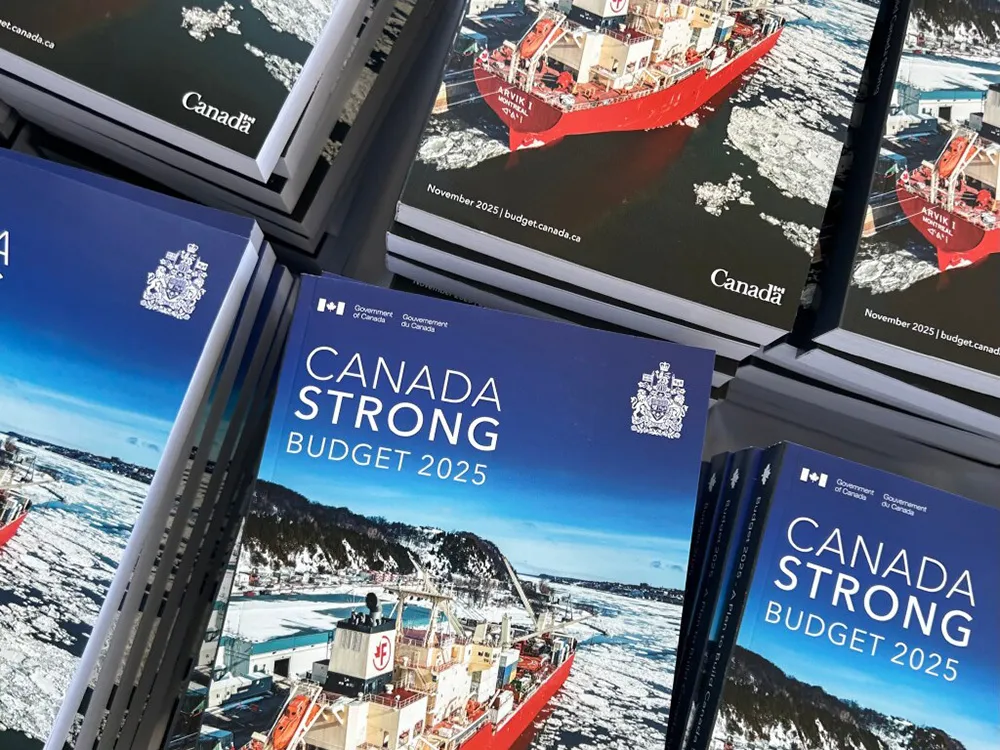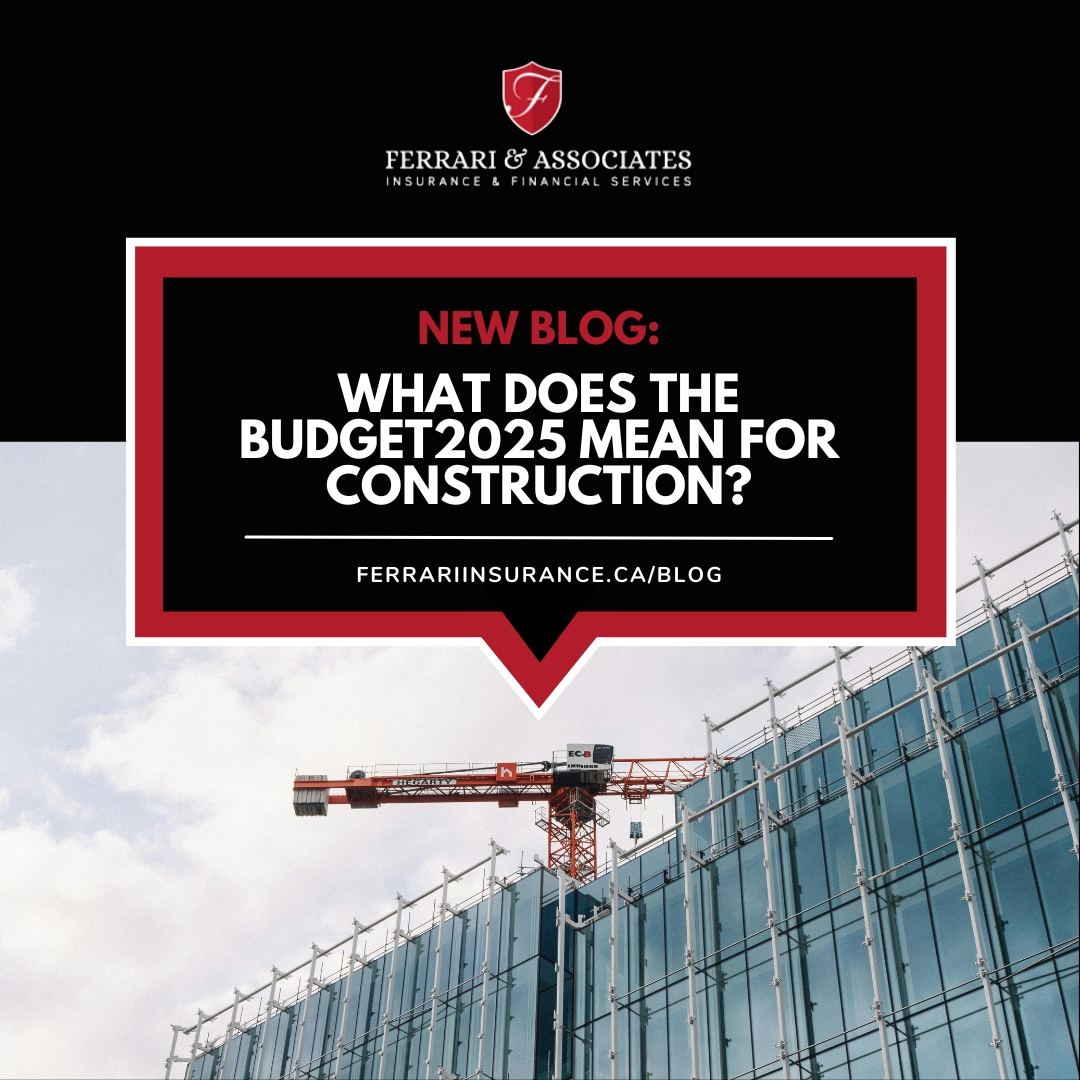A general contractor, subcontractor, specialty trade, and infrastructure contractor all have one thing in common; the federal government’s recently released Budget 2025 brings both opportunity and obligation to the construction industry. If you run a contracting business, now is really the time to recognize what the new Budget 2025 means for you. How does it effect your workload, staffing, insurance and surety readiness. This expert blog article provides information on how to position your company for the coming year. This is the second part of a two-part blog series about how the Federal Government’s Budget 2025 will change the world of construction. You can read part one here.
What does the new Budget 2025 mean?
The new Budget 2025 signals an ambitious capital build-out across Canada. The Liberals are adding approximately $115 billion over five years dedicated specifically to major infrastructure projects. Of that, a new program dubbed the Build Communities Strong Fund will roll out over 10 years beginning in 2026-27. Incredibly, $51 billion is for local infrastructure projects including roads, bridges, water/waste-water and transit, plus other municipal assets.
What does the new Budget 2025 mean for contractors?
There are a few notable takeaways for contractors including more project pipelines, increased demand for skilled trades and we expect that early stage work and planning will pick up.
- More project pipelines: With federal, provincial and municipal dollars flowing into roads, water systems, transit, community infrastructure and large assets Canadian contractors are likely to see more tenders and requests for proposals than in recent years.
- Increased demand for skilled trades: The Canadian Construction Association (CCA) welcomed the budget’s infrastructure push but emphasized the critical workforce shortage in the sector. This really means that if you manage a contracting firm, then you will need to consider how you secure and retain journeypersons, apprentices, site supervisors.
- Early stage work and planning phases will pick up: The Budget 2025 references the creation of a Major Projects Office to coordinate large national builds. “That will lead to more opportunity for contractors experienced in early mobilization, design-build, heavy civil or industrial works” says Partner and VP Construction, Mike Di Pinto.
Why the insurance and surety side matters now more than ever
The new shift will inevitably see an increased scrutiny on cost escalation and schedule risk. “With an emphasis on getting things moving faster, contractors must ramp up readiness, pricing accuracy and resource planning” adds Director of Surety, Kari Davis.
For contractors the right surety and insurance coverage will separate those who thrive from those who struggle. Here is what Kari suggests contractors focus on.
Budget 2025 and Surety readiness
“When you bid on public infrastructure contracts (especially federal-funded or province-municipality funded),” Kari begins, “you will likely encounter stronger requirements for bonding, including bid bonds, performance bonds and labour & materials payment bonds. If you do heavy work, large infrastructure, or multi-year contracts, the entity awarding the work will most definitely require surety backing. If you have not reviewed your bonding facility or your bonding limits recently now is the time. Read our blogs on surety, check out our surety page, or give us a call to discuss how we can help guide you into 2026. With facility season just around the corner, now is the time.
Insurance coverage
Mike Di Pinto warns “standard contractor general liability (CGL) remains foundational but the environment is shifting.” Contractors should consider:
- Larger size projects expose you to higher potential claims. You need to ensure that your limits match the scale of work you bid on.
- If you are a prime you should check that your subs carry appropriate insurance and that your contract assigns risk appropriately. “Talk to me about wrap-up liability,” Mike advises. “Wrap-up liabilty is a single policy that provides third-party liability coverage for all participants on a construction project, such as the owner, contractor, and subcontractors. This is especially important if you enter into design-build or integrated project delivery because you may face wrap-up liability models.”
- “Then there is the environmental risk” Mike adds. “We need to ensure your equipment insurance, and/or pollution liability insurance coverage is current, especially since infrastructure work often involves earthworks, remediation, and water/waste-water systems.”
- “The budget even signals support for AI infrastructure and digital investment” advises Mike. With more technology in construction and procurement, risk of cyberattack is real so we cannot avoid talking about cyber and digital risk either.
How to Prepare for 2026 and beyond
Projects funded now will often begin or ramp up in 2026. If you wait until closer to the contract starts, you may find your surety limits exhausted, your insurance renewal cycle mis-aligned, your resource base thin and your bid team under-prepared. Kari suggests you set your readiness plan now. “With surety facility season in early 2026, it’s important to review your current surety facility, be prepared to increase your bonding limits, if needed.” Mike adds “you’ll also need to audit your insurance schedule and coverage, assess health of your subcontractor chain, and check HR/training plan for trades.”
How to position your construction company for success in 2026
In a previous article, we talked about how to prepare for success in 2026 and beyond. Here are a few strategic actions a contractor or construction firm owner should act on before it’s too late:
Identify municipal, provincial and federal procurement opportunities that are aligned with the infrastructure themes mentioned in the budget. These include transit, water/waste-water systems, bridges/roads, and community buildings, for example. Review the Build Communities Strong Fund streams and regional priorities. This all goes into updating your project pipeline strategy to ensure you’re ahead of most contractors.
We’ve already discussed how with workforce shortages and increased competition, you should start thinking about how to lock in your skilled trades early. This could include investing in apprenticeships, building your own retention strategies, and ensure your site management team is ready for the inevitable wave of heavier civil/infrastructure works coming down the pipe.
At the same time, Mike suggests a contractor “map out the risks you will face on larger infrastructure contracts. This could include schedule extensions, cost escalation, labour shortages, equipment breakdowns, safety and environmental exposures, etc. Once you understand the risks, talk to the Ferrari & Associates team to match your insurance and surety strategy accordingly. We encourage our clients to engage with their broker or surety provider now to adjust bonding facility limits, review performance bond obligations, and ensure subcontracts flow-down insurance requirements. Proper prior planning is key here.
The importance of CPA prepared financials
Kari adds, “make sure you have working capital or funding lines that support your growth plans. Get your CPA to prepare your financials and have them ready for bidding” The budget signals accelerated capital spending and tax treatment changes such as ‘immediate expensing’ for qualifying equipment. Kari also suggests contractors bit aggressively but selectively. “The more contracts you pursue the more chances you have, but I don’t suggest you chase every job.” It’s important to focus on projects for which you are well-matched, and where you can demonstrate past performance, bonding capacity and risk control. You should also understand how to communicate your company’s readiness to project owners.
Kari says contractors should “articulate in your bids how you are ready for infrastructure complexity; how you manage trades and subs; how you address safety, and how you handle scope creep and permit risk. It’s important that you show that you are a partner, not just a bidder.”
Getting ready for 2026 and beyond
Since much of the infrastructure funding begins in 2026 and thereafter, your preparation must begin now. Here are a few reminders from Ferrari & Associates:
As mentioned earlier, it’s critical to review your growth plan. If you plan to expand, hire more trades. Acquire new equipment, or move into heavier civil/infrastructure segments, start the groundwork now. Meet with our surety team to understand how much bonding capacity you have now, what you will need for larger projects, and what performance metrics a surety will look at (e.g., backlog, liquidity, client mix, claim history).
Mike reminds contractors to talk to their broker about upcoming renewals. “You should also consider whether you need higher limits. Additional coverages like pollution liability, builders risk, contractors equipment or wrap-up liability should also be considered. Many infrastructure contracts require the prime contractor to monitor compliance of subs (insurance, safety, regulatory). It’s important to audit your current subcontractor roster, weed out weak links, and ensure that documentation is complete.”
With the new budget signaling significant new work, material supply and labour demand may tighten even further. Contractors must factor that into your pricing and risk contingencies now as well.
Why ignoring the implications is risky
You may find yourself suddenly competing for larger work without the right foundations if you stay in ‘business as usual’ mode.
Here’s a few more tips for consideration:
- The wrong surety limit may disqualify your bid.
- Under-insured exposures on a bigger job could lead to claims that squeeze your margin or worse.
- Labour shortages may cause delays. Your pricing may be under-prepared for escalation. You may end up subcontracting yourself into low-margin roles.
- The federal budget offers the chance for growth but requires intentional readiness. Now’s your chance!
For contractors across Canada the Budget 2025 presents a pretty clear signal. Major infrastructure spending is coming. The demand for skilled trades and project delivery capacity will rise. Perhaps most importantly, now is the time to get ready! Talk to the Ferrari & Associates team today. We’ll work with you directly, ensuring your surety capacity is sufficient, your insurance coverage matches the scale of work, your staffing is aligned with upcoming demand and that you are strategically positioned for the 2026 wave.
We encourage you to use this time to update your risk strategy. Plan ahead and strengthen your operational base. Most importantly, position your firm to capture the large-scale work that is being unlocked with the new budget.


